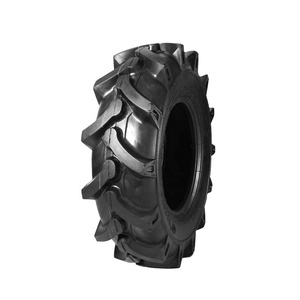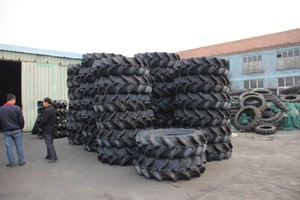(34 products available)





















































































































































The 6.00x12 tire is a standard size for various vehicles, including trailers, ATVs, and golf carts. These tires are further classified into different types based on their usage and application. Here are the most common types of 6.00x12 tires:
Tire 6.00-12
The 6.00-12 tire is a standard-size tire commonly used for trailers, golf carts, and ATVs. The 6.00-12 tire size is further broken down to 6 inches of tire width and 12 inches of rim diameter. These tires are further classified into different types based on their usage and application. Here are the most common types of 6.00-12 tires:
6.00-12 radial tires
These tires have their internal ply layers going radially from one side of the tire to the other. This results in even distribution of the vehicle's weight across the tire's surface. As a result, the tires have a larger tread surface that comes into contact with the road. They also generate more grip, making them ideal for off-road applications.
6.00-12 bias tires
The internal ply layers of these tires crisscross at a 55-degree angle from one side of the tire to the other. The result is a more robust and stiffer lower section of the tire. These tires are preferred for their load-carrying capacity and strength. As such, they are mostly used for trailer applications.
6.00-12 trailer tires
These tires are specifically designed and optimized for towing. They feature a rigid sidewall construction, larger load capacity, and better stability, making them perfect for long-distance towing. Additionally, they have superior heat dissipation, which comes in handy when towing heavy loads over long distances.
6.00-12 all-terrain tires
These tires are designed for ATVs and UTVs. They offer a balanced tread design that gives drivers and riders a confident grip on various terrains, such as mud, sand, gravel, and snow. The tires also feature a durable rubber compound and an aggressive tread pattern. As a result, they are wear-resistant and provide maximum traction.
Overall Diameter
The overall diameter is the first thing to consider. It is the distance from one side of the tire to the other. For the 6.00x12 tire, the overall diameter is 21.5 inches or 547 mm. This number matters because it tells how big the tire is. A bigger tire means better off-road performance, and a smaller one gives a better ride in the city.
Tread Width
The tread width is the distance across the part of the tire that touches the road. For this size tire, the tread width is 6 inches or 155 mm. A wider tread gives more grip on the road, while a narrower one is better for fuel efficiency.
Aspect Ratio
The aspect ratio shows the tire's height compared to its width. The 6.00x12 tire has an aspect ratio of 85. This means the tire is 85% taller than it is wide. A taller tire rolls over obstacles better, while a shorter tire gives a smoother ride.
Load Index
The load index tells how much weight the tire can carry. For this tire, the load index is 84. That means each tire can support 1,110 lbs. or 505 kg. of weight. This matters when hauling heavy items or driving with many people in the vehicle.
Speed Rating
The speed rating says the highest speed the tire can handle. The 6.00x12 tires have a speed rating of "C," which means they can go up to 62 mph or 100 km/h. This speed rating is okay for most off-road and on-road driving needs.
Proper care for these tires helps them to last longer. Here are some tips:
Check the Pressure
Every week, see if the air pressure in the tires is right. Low air makes the tires wear out faster. It also uses up more fuel. For the 6.00x12 tires, the pressure should be 30 PSI cold.
Inspect the Tread
Take a close look at how the tread is worn down. If the tread becomes too low, replace the tire. A new tire gives better grip on the road. Do this check every month.
Check for Cracks and Bulges
Look closely at the sidewalls. See if there are any cracks or bumps. Cracks and bulges can cause flat tires. Do this check every time the tire pressure is checked.
Rotate the Tires
Change the position of the tires every 5,000 miles. Moving the tires helps them wear evenly. For example, put the rear tires in front and the front tires in the rear.
Wheel Alignment
Have the wheels aligned every 10,000 miles. Proper alignment makes the tires wear out the same. It also keeps the vehicle driving straight on the road.
Store Tires Correctly
If the tires are taken off the vehicle, keep them in a dry, cool place. Do not stack them too high. High heat and sun damage the rubber over time.
Understanding the Vehicle's Requirements
Any vehicle's operator's manual or placard on the driver's side door jamb will indicate the recommended tire size. This suggestion should be adhered to for optimal performance, safety, and fuel efficiency.
Usage Considerations
Consider the typical driving conditions and uses for the vehicle. Is it primarily city driving, highway cruising, off-road terrain, or a mix of these? Different tire types are suited to various environments to provide the best grip and longevity.
Load and Speed Ratings
For a given tire size, load rating specifies the maximum weight that can be supported, while speed rating indicates the maximum speed the tire can sustain safely. Ensure the load and speed ratings meet or exceed the vehicle's requirements. If the vehicle is used for high-speed operations or carries heavy loads regularly, these ratings become critical.
Tread Patterns
Tread patterns are essential for tires with specific sizes, as they determine traction, handling, and tire noise. Some common types include:
• Symmetric: Even tread blocks on both sides of the tire for uniform wear and performance.
• Asymmetric: Different tread patterns on the tire's inner and outer sides, enhancing grip and stability.
• Directional: Tread pattern designed to roll in one direction, improving wet traction and stability.
Brand and Quality
Brand and quality influence the performance and durability of 6.00x12 tires. Select well-known manufacturers who provide guaranteed products. Although premium tires may cost more upfront, their longevity and superior performance can yield significant savings over time.
Soil Type
The terrain where the vehicle will mostly operate is also a factor in choosing tire size and type. For example, all-terrain tires are suitable for off-road and on-road driving if the vehicle traverses rugged areas. However, a specialized tire for each environment may be necessary if the soil conditions are extreme.
Seasonal Considerations
Depending on the region's climate, opt for all-season tires for adequate performance in wet and dry conditions or summer tires for optimal summer performance. Winter tires are ideal for areas with severe winters and prolonged snow and ice.
Here's a step-by-step guide for replacing 6.00-12 tires:
Preparation
Park the vehicle on a flat, stable surface. Engage the parking brake and set wheel chocks around the tires that will remain on the ground. Gather all necessary tools: new 6.00-12 tire, jack, jack stands, lug wrench, torque wrench, bead breaker (if removing the rim), tire iron, and valve core tool.
Removing the old tire
Loosen the lug nuts while the tire is still on the ground. Use the lug wrench to slightly loosen the nuts, breaking the resistance. Then, position the jack under the vehicle according to the manufacturer's instructions and elevate the vehicle until the tire is about 15 cm off the ground. Once the vehicle is elevated, use the jack stands to secure it. Completely remove the lug nuts and take off the old tire. If removing the tire from the rim, use a bead breaker to separate the tire from the rim. This tool breaks the tire's bead on the rim, allowing the tire to be loosened and removed. If a bead breaker is unavailable, manually work the bead loose using tire irons and pry bars. Carefully cut the tire's sidewall with a tire iron to facilitate removal from the rim. This technique should be a last resort, as it damages the tire and may damage the rim.
Mounting the new tire
Lubricate the new tire's bead to ease mounting. Then, place the new tire onto the rim and ensure it seats properly. Once the new tire is mounted, inflate it to the manufacturer's recommended pressure, which helps seat the bead and ensures proper tire shape.
Final steps
Position the wheel on the hub and hand-tighten the lug nuts. Subsequently, lower the vehicle off the jack stands, and use the torque wrench to tighten the lug nuts to the specified torque. Then, dispose of the old tire following local regulations. Many tire shops offer recycling services for old tires. Double-check the vehicle's tire pressure and ensure the new tire is correctly aligned and balanced. Take the vehicle to a professional alignment and balancing service if necessary.
Q1: What are the common types of 6.00x12 tires?
A1: The common types of 6.00x12 tires are:
Radial tires:
In radial tires, the plies of the tire are arranged at 90 degrees to the direction of travel. This allows the tread and sidewalls to move independently. As a result, these tires have better road contact, lower rolling resistance, and improved fuel efficiency.
Bias-ply tires:
In bias-ply tires, the plies are arranged in a crisscross pattern that extends from one bead to the other. This creates a more rigid tire with less flex. Bias-ply tires are known for their durability and puncture resistance. They also have lower upfront costs compared to radial tires.
Q2: How to choose the right 6.00x12 tire size for a vehicle?
A2: The 6.00x12 tire size is compatible with various vehicles, including older models of compact cars, small trucks and vans, golf carts, and all-terrain vehicles. Before fitting 6.00x12 tires, check the vehicle owner's manual or the placard located near the driver's door for the recommended tire size, load rating, and speed rating. Ensure that the new tires meet or exceed the specifications set by the manufacturer.
Q3: What does the 6.00x12 tire size mean?
A3: The 6.00x12 tire size can be a bit confusing, but it provides essential information about the tire's dimensions. The 6.00 part indicates the tire's section width in inches, while the 12 part indicates the tire's diameter in inches. For the 6.00x12 tire, the section width is approximately 6 inches, and the diameter is 12 inches.
Q4: Can 6.00x12 tires be used in different weather conditions?
A4: Yes, 6.00x12 tires are designed to be versatile and can be used in various weather conditions, including wet, dry, and snowy. However, it's essential to check the tire's tread pattern and rubber compound, as some tires are specifically labeled as all-season, while others may be more suitable for specific conditions.